
Automolis is a genus of moths in the family Erebidae erected by Jacob Hübner in 1819.

Halysidota is a genus of moths in the family Erebidae. The genus was erected by Jacob Hübner in 1819.

Phragmatobia fuliginosa, the ruby tiger, is a moth of the family Erebidae.
Lambula is a genus of moths in the family Erebidae. The genus was erected by Francis Walker in 1866.
Mantala is a monotypic moth genus in the subfamily Arctiinae. Its single species, Mantala tineoides, is found on Borneo. Both the genus and the species were first described by Francis Walker in 1862. The habitat consists of lowland and lower montane forests.
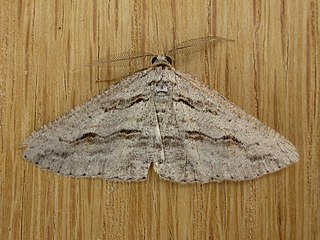
Syneora mundifera, the forest bark moth, is a moth of the family Geometridae first described by Francis Walker in 1860. It is found in Australia.
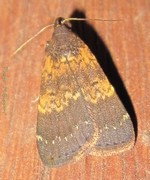
Hydrillodes is a genus of litter moths of the family Erebidae first described by Achille Guenée in 1854. Its validity is somewhat disputed.
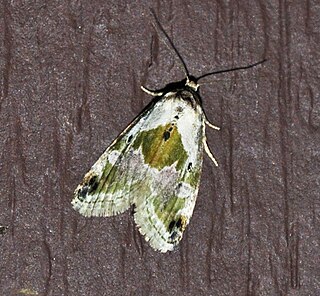
Maliattha is a genus of moths of the family Noctuidae first described by Francis Walker in 1863.
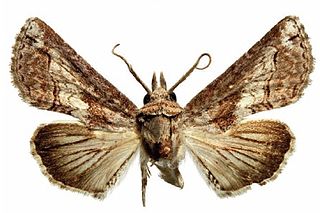
Euteliidae is a family of moths in the superfamily Noctuoidea. The family was erected by Augustus Radcliffe Grote in 1882.
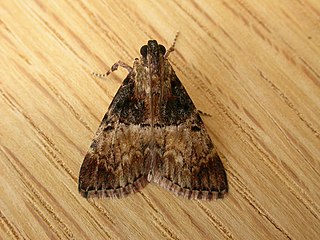
Orthaga is a genus of snout moths. It was described by Francis Walker in 1859.
Eugoa crassa is a moth of the family Erebidae first described by Francis Walker in 1862. It is found on Borneo. The habitat consists of various types of lowland forests, including limestone, wet heath forests and alluvial forests.

Eugoa trifascia is a lichen moth in the family Erebidae, subfamily Arctiinae. The species was first described by Francis Walker in 1862. It is found on Peninsular Malaysia and Borneo. The habitat consists of lowland to lower montane forests.
Eugoa vagigutta is a moth of the family Erebidae first described by Francis Walker in 1862. It is found on Borneo. The habitat consists of alluvial forests, forest on limestone, lowland dipterocarp forests and open coastal forests.
Lambula flavogrisea is a moth of the family Erebidae. It was described by Walter Rothschild in 1912. It is found in New Guinea.
Lambula pristina is a moth of the family Erebidae. It was described by Francis Walker in 1866. It is found in Australia.
Lambula errata is a moth of the family Erebidae. It was described by van Eecke in 1927. It is found on Sumatra and Borneo. The habitat consists of various lowland forest types.
Lambula melaleuca is a moth of the family Erebidae. It was described by Francis Walker in 1866. It is found on the Moluccas. It is the type species of the genus Lambula.
Lambula pallida is a moth of the family Erebidae. It was described by George Hampson in 1900. It is found on Borneo and in Thailand. The habitat consists of dry heath forests and coastal forests.
Teulisna chiloides is a moth in the family Erebidae. It was described by Francis Walker in 1862. It is found on Peninsular Malaysia, Sumatra, Borneo, Sulawesi and Sumbawa. It has also been recorded from Queensland, Australia. The habitat consists of lowland dipterocarp forests, alluvial forests and lower montane forests.







